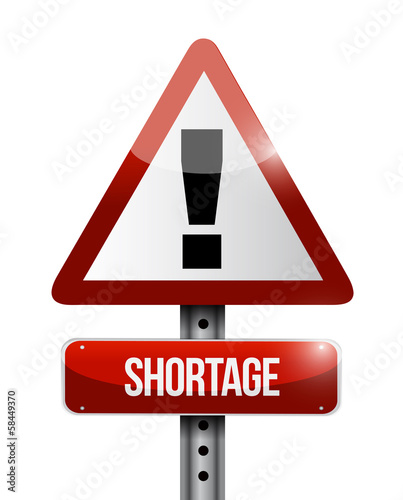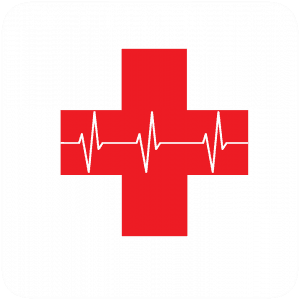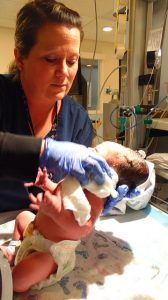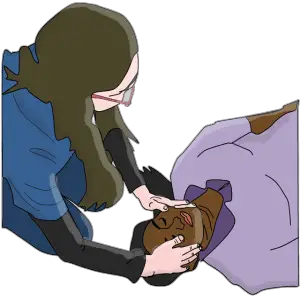eLearning and Distance Learning in 2022: Definition and Benefits
Online and Distance Learning are two separate entities. In a nutshell, the difference between online and distance learning is location. Students can be together with an instructor and use online study or eLearning, but distance study implies that students and instructors are separated.

How Online and Distance Learning Work
eLearning

-The education tool is based or accessible on the internet.
-Programs are anytime/anywhere tools. In this case, learning can be done from home.
-Students receive the training through an online medium even though your teacher may be in the same building
Distance Learning

-Designed in order to be accessible no matter where you are in the world from time to time.
-It can be through webcams or chat programs
Benefits of e-Learning

1.) Learning is more interactive
eLearning makes the process much more interesting and interactive. Their input is needed, in effect, it helps them retain information better.
2.) Convenient for adult learners
Adults find learning much easier when they’re doing so through eLearning systems.
3.) LESS EXPENSIVE TO PRODUCE
Using their tool written work software to create your own specific nonconcurrent preparing programs.
4.) Self-paced
Most eLearning tools can be taken when needed.
5.) Moves faster
The individualized approach enables learners to skip material they already know and understand. They move onto the issues they need preparing on for this reason.
6.) Provides consistent message
E-learning eliminates the problems associated with different educators teaching barely different materials on the same subject.
7.) Updated easily and quickly
Updated materials are uploaded to a server.

Benefits of Distance Learning*
1.) Decision
An online guideline gives the chance to contemplate more subjects and connect with programs that are not accessible in the incite zone.
2.) Pace
Online preparing empowers this kind of learning to work at their own particular pace a significant part of the time.
3.) Booking
The calendars for distance learning are more open to take the classes at whatever point it fits into their timetable.
4.) Money
Online classes typically cost not as much as preparing in a classroom circumstance.
5.) No classroom setting
Sitting in the classroom is not an ideal route for each understudy to learn. Therefore, this learning is an ideal set-up.
Ultimately, both distance learning and e-learning can be effective modes of education, especially in a vastly growing population. Both have their pros and cons and such innovative forms of educational methods.

We’ll help you decide!
Top 7 Nursing Trends of 2022
From resolutions to new trends, the start of every new year brings new things. This article highlights 7 nursing trends of 2019. Whether you are a travel nurse or a permanent nurse, these 7 nursing trends of 2019 are things that can benefit you.
7 Nursing Trends of 2022:
Nursing jobs will continue to rise

The nursing job outlook is expected to grow by 15% during a 10-year period from 2016 – 2026. This means for every nurse, they will have plenty of opportunities.
The nursing shortage will continue to rise
 Schools are turning away thousands of qualified applicants as they struggle to expand class size and hire more teachers for nursing programs.
Schools are turning away thousands of qualified applicants as they struggle to expand class size and hire more teachers for nursing programs.
Hiring bonuses will continue to grow 
From sign-on bonuses to travelers to free housing and tuition bonuses being given by hospitals, there are plenty of benefits for nurses and their children. Hospitals and other medical facilities are getting so desperate to recruit and retain nurses they’re offering all sorts of pricey perks and incentives.
Nurses will gain more education
 There will be more demand for nursing specialties. For nurses to gain more specialties, they will need more education. This article by Nursing Education states that nurses with BSN degrees will jump from 50% to 80% by 2020 and nurses with a doctoral degree will double from now to 2020.
There will be more demand for nursing specialties. For nurses to gain more specialties, they will need more education. This article by Nursing Education states that nurses with BSN degrees will jump from 50% to 80% by 2020 and nurses with a doctoral degree will double from now to 2020.
Nurses will reap the benefits of a nurse compact license 
This is good news for nurses making it easier than ever to use your home state’s nursing license to get a promising job across state lines.
Nurses will retire at a later age
 The shortage of nurses is having an impact on new and existing nurses. Nurses can stay on past a normal retirement age and their jobs are secure. With advances in healthcare, nurses themselves are living longer, healthier lives when they care for their bodies, allowing them to work to a later age.
The shortage of nurses is having an impact on new and existing nurses. Nurses can stay on past a normal retirement age and their jobs are secure. With advances in healthcare, nurses themselves are living longer, healthier lives when they care for their bodies, allowing them to work to a later age.
Technology advances will continue 
As stated in our future trends in the nursing industry last year that technology will continue to grow and shape the healthcare industry. It’s important for nurses to be familiar with each of the programs that are used in the facility they are working in.
Top Ten Patient Safety Issues 2018
 Patient safety issues for providers to prioritize in 2018, presented below in no particular order, are the top 10 patient safety issues reported in the past year.
Patient safety issues for providers to prioritize in 2018, presented below in no particular order, are the top 10 patient safety issues reported in the past year.
1.) Disparate electronic health records (EHRs)
This contributes to poor interoperability, putting patients at risk for events such as medication mixing. This can negatively affect patient care.
A lack of interoperability may mean providers are not getting the whole picture when it comes to their patients’ conditions. It also makes effective patient care harder in times of crisis or during natural disasters.
2.) Hand hygiene

This remains as a top safety concern, as noncompliance was linked with several infections and even death.
While it may seem difficult to control the actions of an entire health system staff, interventions such as signage, smart notifications, and education can significantly increase compliance and save lives.
3.) Nurse-patient ratios
Inadequate staffing at healthcare facilities can greatly affect patient care.
One study published in the International Journal of Nursing Studies demonstrated that for every additional patient on a nurse’s caseload, mortality rates increased by seven percent.
4.) Shortages of drugs and medical supplies
The supply chain is responsible for a surprising number of adjustments to patient care. In May, many hospitals were forced to delay major operations and chemotherapy treatments due to a nationwide shortage of sodium bicarbonate solution.
5.) Quality reporting
When paperwork demands more time than patient care, there’s cause for reexamination.
Hospital systems can improve the patient experience and prevent the next safety threat on the list.
CMS plans to simplify the measures hospitals and physicians must report on, zeroing in on the most important measures to improve care quality and patient outcomes.
6.) Physician burnout
Physician shortage has been an increasing problem. This impacts the majority of physicians, with a nearly 20 percent increase in those reporting symptoms in the last five years.
The healthcare executives argued addressing burnout should be a major priority for all healthcare leaders, as it can threaten patient safety, quality of care and increase healthcare costs.
7.) Resurgent diseases
Scarlet fever and measles are once again threatening patient safety.
Misinformation about vaccines led to an unfortunate drop in immunization rates, posing a direct threat to both public and patient safety and must be accounted for.
 8.) Mergers and acquisitions
8.) Mergers and acquisitions
Health and hospital networks can bring many positive changes for everyone involved, but they also pose a safety risk.
Research shows patients living in competitive healthcare markets exhibit better health outcomes and lower mortality rates than those who live in areas with less healthcare competition.
9.) Antibiotic resistance
It posed a world health concern for many years.
This issue is highly complex in terms of both social and biological science and the international community must continue to work toward a solution.
Infection control leaders can look to organizations for tools to improve antibiotic stewardship and resistance.
10.) The opioid epidemic
 It remains critical that healthcare leaders stay diligent about promoting more responsible medical use of opioids.
It remains critical that healthcare leaders stay diligent about promoting more responsible medical use of opioids.
Three physician leaders argued hospitals should be penalized for opioid addiction if the condition develops as a result of hospital-based care that could have been prevented by adhering to evidence-based practices.
To receive the latest hospital and health system news, visit us weekly for updates.
Four Critical Health Care Trends 2018: Most Significant Issues

While there are many new and emerging trends we need to pay close attention to in 2018, here are the four most significant health care issues that will command our attention in the year ahead.
1. Inconsistent health care policy will continue to dominate headlines
Health care reform this year has been a case study in confusion, inefficiency, and lack of focus. Every week seemed to bring a new twist in the direction of health care policy. There is almost no consistency in the legislative thought process.
The federal government’s lack of direction on health care policy has created chaos among all industry players.
The confusion surrounding Medicaid and other joint federal-state partnerships will ultimately face the harshest consequences if states are forced to slash funding for health care.
We’re going to continue to see an inconsistency in government policies and funding. It is dangerous for hospitals in underserved communities that rely almost exclusively on Medicaid and Medicare funding.

2. Hospitals and health systems need to innovate to keep pace
The CVS-Aetna deal did not come as a surprise to industry leaders who have been keeping their ears to the ground and have paid attention to recent trends.
Providers should not view this movement as a threat that must be stopped. Instead, we should spur innovation on our end.
It will be especially intriguing to see what market segments CVS and Aetna pursue after the finalization of the merger.
It’s highly unlikely that any of the new players will be providing inpatient care. The bulk of health care funding is spent on long-term care for people at the end of life.
Market disruptions give all of us headaches, but they are ultimately beneficial because they force us to do better and be more efficient, productive and creative.
3. Improve the customer experience
 The more competitive the market becomes, the more work we as providers must do to continually improve the patient experience and develop customer loyalty.
The more competitive the market becomes, the more work we as providers must do to continually improve the patient experience and develop customer loyalty.
This can partly be done through improving communication and curating a more retail-focused experience.
As patients now have more access and choice for their health care than ever before. This does not only pertain to the in-person experience but also how hospitals and health systems communicate with patients to help them get information and make appointments.
Over the past five or six years, we’ve seen major changes in the way innovative organizations in all industries treat their customers.
We are in the consumer service business, and our patients are knowledgeable. They value easy access, a pleasant experience, and quality care. So it’s our job to adapt quickly to meet their needs and expectations.
4. Health care strategies must now encompass behavioral and mental health
It is the responsibility of providers to design their systems in a way that addresses the needs of these individuals.
This is especially important at a time when opioid abuse has become one of this nation’s most challenging public health crises.
The problem goes beyond drug and alcohol abuse. Studies have shown that younger generations’ increased use of technology, particularly mobile devices, can lead to increased rates of anxiety, depression or loneliness.
We as providers must consider these trends and tailor services accordingly.
Regardless of the issues we face in this ever-evolving industry, we as providers must not resist change. We must continually adapt.
Visit us for more info.
The 20 Nursing Career Specialties : Demands, and Salaries
The nursing field has seen explosive growth in recent years, and this should continue for the foreseeable future. If you are intrigued by a career in nursing, you will likely find a specialty in this list.
20 Nursing Career Specialties
Neonatal Nurse

This specialty works with premature babies, most often in an intensive care setting. They provide extensive care for premature infants who usually have a variety of health problems.
Career Path: BSN, Master’s Degree, Specialized training/experience with neonates
Job Demand: will increase by 17% by 2022.
Average salary: $65,000
Nurse Midwife
This specialty is a type of advanced practice registered nurse who provides and coordinates patient care for mothers and expecting mothers.
Career Path: Many experiences as a nurse, Master of Science degree in nurse-midwifery.
Job Demand: will increase by 31% by 2022.
Average Salary: $79,000.
Clinical Nurse
This specialty treats patients who have more serious health problems in most cases. They usually work in the hospital in a clinical setting.
Career Path: BSN, MSN, Specialized, Clinical Nurse Training
Job Demand: will grow by 20% by 2022
Average Salary: $67,000.
Critical Care Nurse
 This specialty works most often in the intensive care unit or ICU.
This specialty works most often in the intensive care unit or ICU.
Career Path: BSN, Worked at least 2 years in ICU.
Job Demand: will grow by 16% by 2022
Average Salary: $61,000
Dialysis Nurse
This specialty works with patients who have kidney problems and who must receive dialysis on a regular basis so that they can survive.
Career Path: BSN, Take classes in dialysis specifically nephrology and pharmacology.
Job Demand: at least 19% by 2022
Average salary: $64,000
Nurse Practitioner
 These professionals work under the eye of a doctor, and they do patient exams, diagnose various illnesses and prescribe drugs.
These professionals work under the eye of a doctor, and they do patient exams, diagnose various illnesses and prescribe drugs.
Career Path: BSN, MSN and several years experience in the field
Job Demand: at least 25% by 2022
Average Salary: $94,000
Health Policy Nurse
This specialty works at an administrative level in various public and private organizations to come up with policies that will make people in society healthier.
Career Path: BSN, MSN, Worked in the field for years, Specialized field by participating in a health policy residency
Job Demand: at least 17% by 2022
Average Salary: $66,000
Nurse Anesthetist
This specialty provides anaesthesia to patients who are going into surgery. They also help manage patient care in the OR, and they provide follow up care for many procedures that are done on an outpatient basis.
Career Path: BSN to RN (at least 2 yrs experience), MSN in Nurse Anesthesia, Work in acute care, such as an ICU or ER
Job Demand: will grow by 22% by 2022
Average Salary: $154,300.
Informatics Nurse
This specialty collects, interprets and analyzes important medical data that comes into a health facility every day. They also train other nurses in the hospital on any new technology that is being introduced.
Career Path: BSN to RN (years of experience), Take classes in Informatics Nursing
Job Demand: Growth in this field is probably not as high as nursing overall
Average Salary: $83,000
Nurse Educator
 This speciality teaches other professionals to become nurses.
This speciality teaches other professionals to become nurses.
Career Path: BSN to RN, MSN, May need a doctorate in Nursing.
Job Demand: will grow by 19% by 2022
Average Salary: $65,000.
Nurse Advocate
This specialty represents the interests of the family and the patient in a clinical care setting.
Career Path: BSN to RN (years of experience), Continuing education classes in social and financial matters related to health care. Then you need to be employed as a nurse advocate and possibly become a consultant.
Job Demand: will grow by 19% by 2022
Average Salary: $57,000.
Nurse Researcher
This speciality works closely with various medical organizations and research organizations to do clinical studies related to health.
Career Path: BSN and MSN, Doctorate in nursing (Often required). Experience or training in clinical studies
Job Demand: will increase by 26% by 2022
Average Salary: $90,000.
Pain Management Nurse
 This speciality is a type of advanced nursing and helps the patient to not become addicted to narcotics. They work with the patient to determine what is causing the pain and then works with other medical professionals to determine the best course of treatment.
This speciality is a type of advanced nursing and helps the patient to not become addicted to narcotics. They work with the patient to determine what is causing the pain and then works with other medical professionals to determine the best course of treatment.
Career Path: BSN to RN (years of experience at least 2000 hours related to nursing pain management)
Job Demand: at least 19% for all nurses by 2022
Average Salary: $67,000.
Psychiatric Nurse
This speciality has a high degree of expertise in mental health, crisis intervention and therapy that they use to help patients deal more effectively with mental illness.
Career Path: BSN to RN, Education in mental health and experience in the field.
Job Demand: Over 20% by 2022 in this profession
Average salary: $65,000.
Trauma Nurse
This speciality usually works in ERs, trauma facilities, and urgent care centers. This is a high demand, high-stress profession, and it is not for every personality.
Career Path: RN to BSN, Years working in a trauma center or ER, Obtain emergency nursing certification.
Job Demand: at least 20% growth in this field by 2022
Average Salary: $65,000.

Travel Nurse
This speciality usually works for a nursing or health care agency that covers a certain area of the US, or possibly the entire country. They provide nursing services to hospitals and medical facilities to fill a short-term need.
Career Path: BSN to RN, at least 2 years experience working in one or two facilities.
Job Demand: at least 20% growth by 2022
Average Salary: $70,000, and the employer will pay benefits usually as well as a housing allowance.
Pediatric Nurse
This speciality works with young children, most often in a clinical or intensive care setting. They provide children with specialized care.
Career Path: BSN and some master’s degree. You need specialized training or experience working with children.
Job Demand: at least 19% by 2022
Average salary: $65,000.
Geriatric Nurse
 This speciality is trained to work specifically with the elderly and to handle the challenges that these types of patients have.
This speciality is trained to work specifically with the elderly and to handle the challenges that these types of patients have.
Career Path: BSN to RN, Special training in working with elderly patients.
Job Demand: at least 20% by 2022
Average Salary: $65,000.
Public Health Nurse
This speciality generally focuses on preventative medicine. They primarily educate people about health issues and try to improve community health before people get sick.
Career Path: BSN to RN. Experience or training in PHN. Possibly earn a master’s degree.
Job Demand: At least 20% by 2022
Average Salary: $66,000.
Oncology Nurse
This speciality works one on one with cancer patients in a hospital, clinical care center or even at home.
Career Path: BSN and be a practising nurse for several years. Eventually, earn a certification in oncology nursing, and MSN.
Job Demand: At least 20% by 2022
Average Salary: $68,000.
Choosing Your School
Start your career by enrolling online.








 Schools are turning away thousands of qualified applicants as they struggle to expand class size and hire more teachers for nursing programs.
Schools are turning away thousands of qualified applicants as they struggle to expand class size and hire more teachers for nursing programs.
 There will be more demand for nursing specialties. For nurses to gain more specialties, they will need more education. This article by
There will be more demand for nursing specialties. For nurses to gain more specialties, they will need more education. This article by 
 The shortage of nurses is having an impact on new and existing nurses. Nurses can stay on past a normal retirement age and their jobs are secure. With advances in healthcare, nurses themselves are living longer, healthier lives when they care for their bodies, allowing them to work to a later age.
The shortage of nurses is having an impact on new and existing nurses. Nurses can stay on past a normal retirement age and their jobs are secure. With advances in healthcare, nurses themselves are living longer, healthier lives when they care for their bodies, allowing them to work to a later age.
 Patient safety issues for providers to prioritize in 2018, presented below in no particular order, are the top 10 patient safety issues reported in the past year.
Patient safety issues for providers to prioritize in 2018, presented below in no particular order, are the top 10 patient safety issues reported in the past year.

 8.) Mergers and acquisitions
8.) Mergers and acquisitions It remains critical that healthcare leaders stay diligent about promoting more responsible medical use of opioids.
It remains critical that healthcare leaders stay diligent about promoting more responsible medical use of opioids.

 The more competitive the market becomes, the more work we as providers must do to continually improve the patient experience and develop customer loyalty.
The more competitive the market becomes, the more work we as providers must do to continually improve the patient experience and develop customer loyalty.
 This specialty works most often in the intensive care unit or ICU.
This specialty works most often in the intensive care unit or ICU. These professionals work under the eye of a doctor, and they do patient exams, diagnose various illnesses and prescribe drugs.
These professionals work under the eye of a doctor, and they do patient exams, diagnose various illnesses and prescribe drugs. This speciality is a type of advanced nursing and helps the patient to not become addicted to narcotics. They work with the patient to determine what is causing the pain and then works with other medical professionals to determine the best course of treatment.
This speciality is a type of advanced nursing and helps the patient to not become addicted to narcotics. They work with the patient to determine what is causing the pain and then works with other medical professionals to determine the best course of treatment.